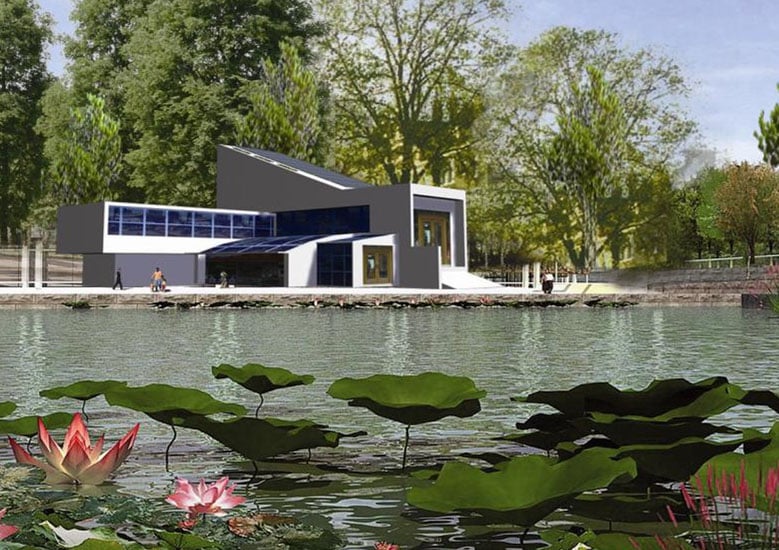BIPV - Building Integrated Photovoltaics
What does BIPV stand for?
BIPV stands for Building Integrated Photovoltaics. As the name itself says, the solar cells are integrated into a building structure, instead of mounted on it. Building integrated photovoltaic materials can be used to replace conventional elements of a building, including the roof and facades. BIPV - solar panels integrated in a house
BIPV - solar panels integrated in a house
What are the advantages of BIPV?
Cost reduction
The major advantage of integrated photovoltaics over the regular solar systems is that the initial cost can be offset by reducing money spent on construction materials and labor that would normally be used to construct the part of the building that the BIPV panels replace.
Design
BIPV modules can be fully customized in size, color, shape and so on. Therefore it is the ultimate element for an architect to include in the building and it can be fully part of the characteristics of the structure. For instance: using photovoltaics cells for skylight systems in entrance halls, atria or courtyards, can be both economical with the use of solar energy and at the same time it serves as an exciting design feature.
Protection against elements
Modules can protect against the weather, giving shade from the sun as well as protection from wind and rain. They also protect against lightning, being an electrical resistor.
Thermal insulator
When the weather gets cold (or hot), non-ventilated BIPV modules act as thermal insulation through the sandwich construction of the modules.
 BIPV comparison - Traditional solar roof
BIPV comparison - Traditional solar roof BIPV comparison - solar panels integrated in roof
BIPV comparison - solar panels integrated in roof
Is BIPV already widely installed around the world?
With costs for solar cells decreasing every year, the potential for BIPV applications is growing. In fact, moving from regular to integrated solar products is the most logical transition in the solar industry. BIPV is one of the mostly watched segments of the photovoltaic industry, however it is far from mainstream. Sinovoltaics observes that the BIPV segment is slown down because of the standardized solar panels that have become a commodity, and have decreased in price drastically. So far, BIPV products are produced only on a smaller scale. Some governments specifically stimulate the installation of BIPV materials: For instance in France there has been before a more than generous feed in tariff available for BIPV installations: EUR 0.25/kWh, higher than a regular roof installation.  Regular PV on the left, BIPV on the right
Regular PV on the left, BIPV on the right
Are BIPV installation more complicated than regular solar panel installations?
Yes, a BIPV installation requires more preparation and skill to install than a regular solar panel installation. Major point is that the integrated solar needs to be discussed in an early stage for the construction of a building. This means architects, project developers and pv system designers have to cooperate closely. The integrated solar components used can be an issue, as there are sometimes few reference projects with the materials used. For some architects it is a major step to integrate photovoltaics in a construction, while the integrated solar products are all newly developed materials. It requires architects with vision, in combination with a solar expert that knows the market very well.

ben
on 29 Feb 2016